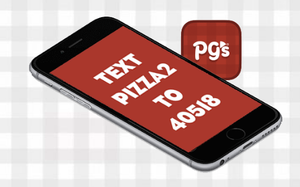
While quick-serve and fast-casual
restaurants had their share of winners and losers in 2019, apps -- as in applications -- and mobile marketing in general remain at the top of every marketing menu.
Apps are hardly new, but
some of the biggest restaurant chains are just beginning to optimize them in conjunction with new or revitalized loyalty programs that yield more personalized data and offers. Meanwhile, they should
prepare for the next wave in personal communication: RCS, or rich communication services, which some people believe will replace most if not all apps in the very near future.
For its latest
Dining Trends Report, in September machine learning solutions provider AdTheorent commissioned an online survey by The Harris Poll of 2,050 U.S. consumers ages 18+. Seventy percent of respondents
reported using mobile devices on their fast-casual and quick-service food-purchasing journey.
The survey found that 42% of respondents used a mobile device to look for coupons/deals and 38% to
look up menu items. Just 28% paid for a food order via a mobile device. Digital ads on mobile devices and computers were found to drive more restaurant visitation, as cited by 58% of respondents,
compared with 39% for television ads and 28% for emails from restaurants.
“Our research shows that relevant and tailored ads are more well received and drive superior results for
marketers,” Jim Lawson, CEO of AdTheorent, tells Marketing Daily. “Additionally, a majority of consumers would be more likely to visit a QSR/FCR following receipt of a
personalized ad based on past orders (70%) or the consumer’s location (66%).”
Once they’ve chosen a restaurant, what do patrons want to see on the menu? According to the
Harris survey, topping the list are a larger variety of meal options (41%) and side dishes (37%). And while 37% indicated a desire for healthier alternatives, far down on the list were sustainable
ingredients (18%), vegetarian options (16%), gluten-free options (14%) and vegan options (11%).
Marketing technology provider InMobi examined data regarding 9.5 million visits across 12
leading U.S. restaurant brands, along with first-party telecommunications data and consumer surveys, for insights into app owners. In the burger, pizza, sandwich and Mexican categories, more men
download apps than women -- who download more apps than men in the coffee category.
In the QSR space overall, the average app owner is a white male ages 25-44 who earns between $50,000 and
$70,000 annually, according to InMobi.
During the past 10 years, in the wake of the Great Recession, many FCRs have struggled to drive traffic because “diner preference typically tend to
trend toward the performance of the economy,” says Dennis Becker, CEO at personalized marketing firm Mobivity.
“And as the economy is doing well, QSR concepts often develop
higher-ticket and/or premium items to better compete -- like the Popeye’s Chicken Sandwich and Carl’s Jr. $6 Burger.”
Like other FCRs, Massachusetts-based chains Papa
Gino’s and D’Angelo Grilled Sandwiches had experienced a downturn in traffic and insufficient same-store sales, despite using email engagement campaigns. When parent company New England
Authentic Eats deployed Mobivity SMS text messaging to send timely mobile offers and capture related transactional data, people visited the company’s restaurants more than three times more often
over a six-month period, according to a Mobivity case study.
As more brand marketers embrace RCS texting over SMS for its richer and more engaging experience, RCS could replace apps entirely,
according to John Duffy, head of global RCS at customer engagement company IMImobile.
Asked for his view, Derek Johnson, CEO at text messaging marketing provider Tatango, tells
Marketing Daily, “99% of mobile apps will be replaced by more advanced messaging capabilities. You’ll see this start to really happen at the end of 2020.”